Recently, I ventured into the world of custom keyboards. Which seems to be actually a trend for engineers here in Japan. I’ve been here for a while but never really realized how many split keyboard designs actually originate from Japanese engineers. I think the Keyball keyboards are really something special, even though they are not as popular as the Corne keyboard. Since there’s not a lot of English information about the Keyball, I decided to write about it on my blog.
I’ve known about, and have been intrigued by, the Keyball keyboard, a split keyboard with an integrated trackball for some time but since my main daily driver has been the Microsoft Sculpt keyboard, I haven’t really thought about switching. Unfortunately my Sculpt keyboard was starting to show its age. The rubberized grips of the ergonomic mouse it came with are deteriorating, and pretty unpleasant feeling, and the wrist pad on the keyboard is falling apart. When I discovered that Microsoft had discontinued the Sculpt keyboard last year, I stumbled upon a glowing (and quite funny) review of the Keyball 39 boldly claiming that “Ultimate Keyboard Quest Ends” with the keyboard . In my state of despair, I impulsively decided to buy it. A few minutes after hitting the buy button, I learned that, I had purchased a kit, not an assembled unit. I knew it is normally a kit, really not sure why I didn’t read closer. But since by then it was already on the way, I decided to just buy some solder switches and key caps, and plunge headfirst into the deep end of the custom keyboard pool.
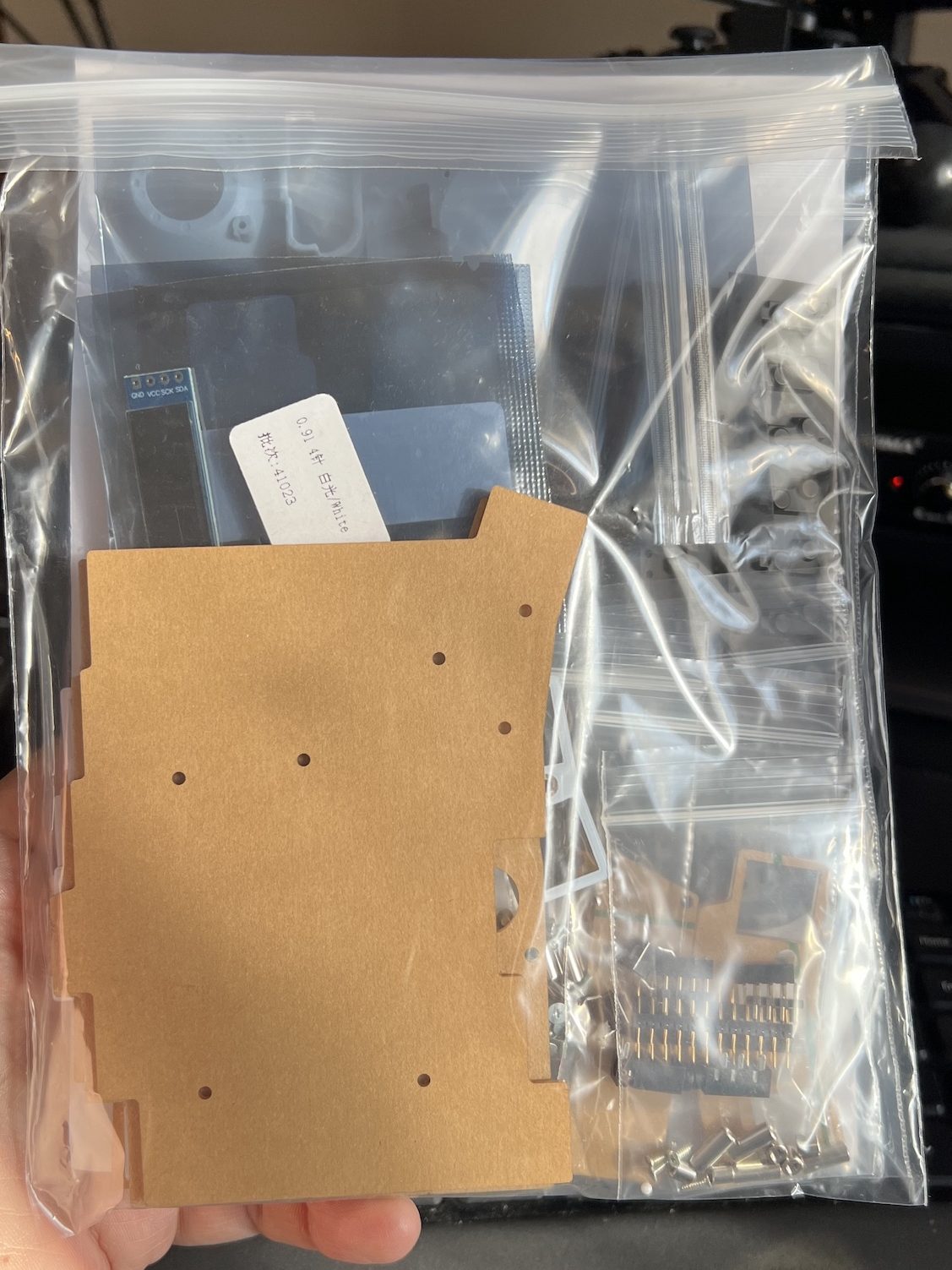
The YouTube Algorithm and Mechanical Keyboards
I wasn’t completely in the dark. A while back, the YouTube algorithm decided I was into keyboards out of the blue, and I found myself watching hundreds of mechanical keyboard reviews. While I was perfectly happy with what I felt was practically the perfect keyboard, I was impressed with how high the production value, camera work and practically Apple-like visuals many of (:3ildcat for example). The keyboards themselves never appealed to me. As I’ve been using Microsoft ergonomic keyboards since the 90s when they were known as the Natural Keyboard. The lack of any real ergonomic mechanical keyboards meant I never found anything that looked appealing, so I eventually stopped watching.
Assembling the Keyball 39
Assembling the Keyball 39 was easily the most challenging electronics project I’ve undertaken since high school (where I built some circuits by hand for physics class). It’s definitely not something I recommend for beginners, but there are custom keyboard shops in Japan where you can get assistance. Despite the difficulty, I managed to put it together one Saturday evening. Assembling these kinds of things yourself really does give you the confidence that you could fix any issues and even do modifications in the future. This aspect is particularly valuable now that Microsoft has abandoned the Sculpt keyboard.
If you are going to try putting one together yourself I recommend the official Keyball39 build guide and this build video of the keyball44. Definitely read the whole thing first as mistakes are not easily undone when soldering, especially when more than one pin is involved.
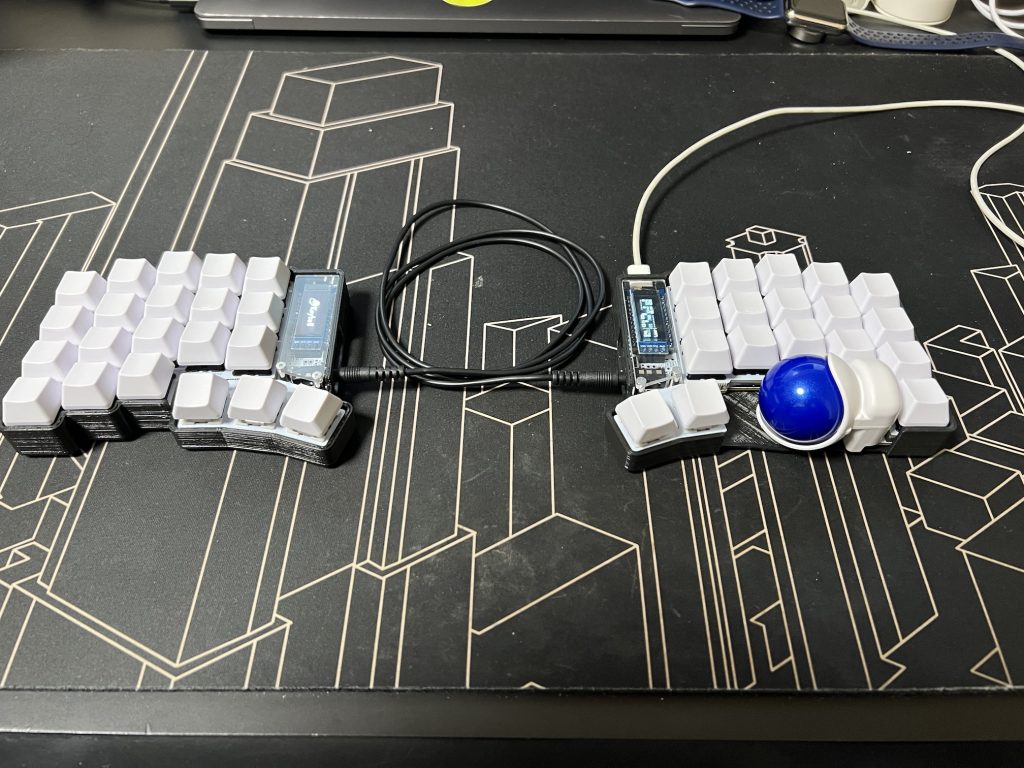
Using the Keyball 39
Using the Keyball39 has been an adventure. If I had bought a pre-built keyboard, I might have actually returned it. But since I invested all that time and effort into assembling it, I felt committed. The main issue, is really just the limited number of keys. Even though the 39 is the most popular one, it’s because ergo maniacs are the ones who buy multiple keyboards as they constantly search for something better I think. Personally as a “Caps-Lock as Control” user myself since I picked up Emacs in high-school, It is just infinitely better to have a column of keys next to your pinky fingers for tab, control, shift on the left and backspace, enter and shift on the right.
Home-Row Mods and my Keymap
The only way the 39 makes sense is by using home row mods, but even then, it’s not perfect. I actually don’t use all of my mods on the home row because A, S, D and F are quite common characters in English, and there’s a slight delay when you configured them as home row mods. I’ve found using Z as shift to be much better for me since it’s a rare character. Even so I still mistype z all the time. It is quite annoying.
As an Emacs user, Ctrl is a key I’ve been quite accustomed to using, and not having it easily accessible next has been one of the hardest things to get used to. Especially when I’m using a terminal. I tried for a while to use the A key as a Ctrl, but again, it causes me to trip up when I am typing way too much. I think if I were a VI user, I might have an easier time. So again, definitely go with the 44 if you are in the Emacs side of the fence.
I spent a whole week trying various keymaps before I settled on the one I’m using. The idea behind it is to make the keys be as close to where they are in a normal Japanese keyboard layout as possible. That way I work with my muscle memory instead of against it. You can see my keymap below if you would like some inspiration. Being able to easily tweak this in Remap is amazing. Couldn’t imagine how annoying it would’ve been without this UI.
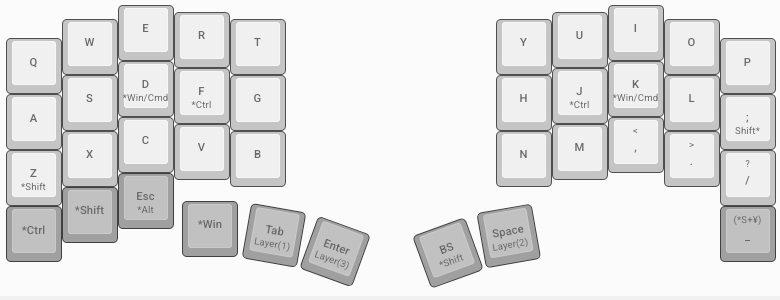
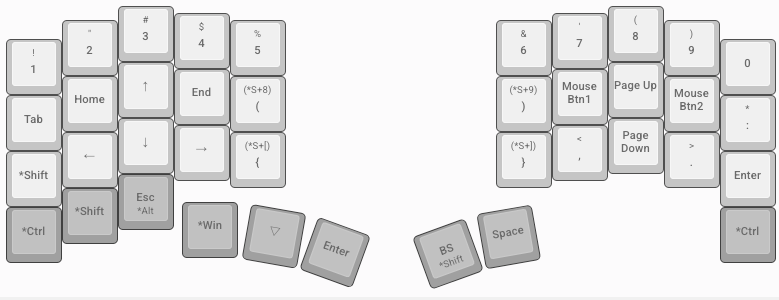

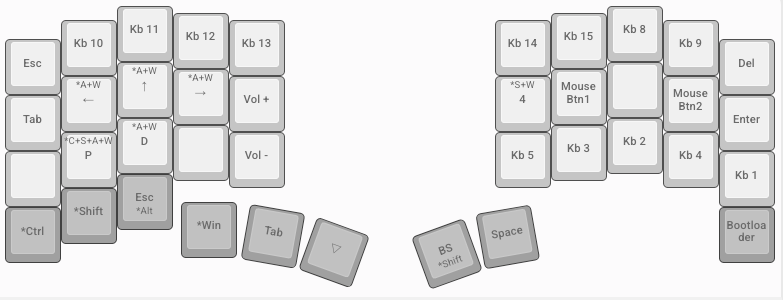
I still have a few keys available in layer 4. Haven’t thought of a use for them yet, but it’ll probably be filled with macOS shortcuts that I often use.
Ergonomics
In general, split keyboards are more ergonomic than normal rectangular keyboards. I’ve never suffered from RSI-related pains because I take ergonomics seriously I think. Now as a person who keeps this stuff in mind, and after using this ortho-linear keyboard for a few weeks, I think I’ve learned a couple of things. First, the traditional layout of a keyboard is often criticized because you have to hold your hands at an angle, but I think this is wrong. If I look at how I use a normal keyboard. My hands are actually pretty straight. If you have your hands follow the staggered angle of the keys, it’s not that bad ergonomically. this is one of the reasons why the Natural keyboard kept that layout I think. The problem is that having your hands straight means that there’s a few keys that become hard to reach, and that’s why it has huge keys near the center, to make that easier.
Staggered Ortho-linear keyboards have their keys straight, so they only make sense if they are split so that you can tilt them in to the right position for your hands. The problem I find is that now my right pinky is blocked by my index finger. So I still think that a traditional keyboard layout (used in the strange way I use it) is better ergonomically. If you are using a keyboard the ‘right’ way, it’s definitely a minus. I definitely felt that my left arm got way more tired with the keyball than with my Sculpt keyboard. Even after adding a tenting mod to get it more inline with the inclination my Sculpt keyboard has.
That said, wow you can type really fast with the keyball39. I’ve really struggles to beat 100 WPM on a normal keyboard, but I can do over 120 on the keyball39… Until I have to use symbols. I really struggle to get over 30 wpm on code, it is quite frustrating to use. The only way I’ve been able to manage that is to cord thumb keys.
The Trackball Advantage
While my left hand and arm felt a little fatigued with the keyball, my right arm and hand feel great. The integrated trackball is a significant win compared to having to swing your arm over to a mouse. I really like that trackball quite a lot. Scrolling isn’t as good as I would like it to be, but I do think that can probably be fixed with some fine-tuning of the firmware code, which I hope to do sometime later.
The integrated trackball makes the Keyball39 really worth it for me. MacOS is a mouse heavy OS so the advantage is really big. So while I have been critical about many aspects in here, they are really more like nitpicks, that I think of as small ways the keyball could be made better.
Next Steps
I’m considering a few mods to my Keyball39. In particular I really want to do a wireless mod. That would make traveling with the thing feel a lot better. But I hear that the trackball sensor is quite inefficient, so it wouldn’t be as straight forward as plopping on some pro-micro compatible boards.
I also miss the curvature of the Sculpt keyboard, and makes me think that perhaps I can design and print some 3d keycaps that give it a more natural shape. I tried printing some low profile keycaps and it worked kind of ok. The main problem is that it would make the thing less portable which I think is one of the big advantages of the Keyball39, it’s small enough to be portable, so once you get used to it, and unable to use a normal keyboard ever again, you can take it with you. It does just barely fit inside the case that came with my GPD Win 3.
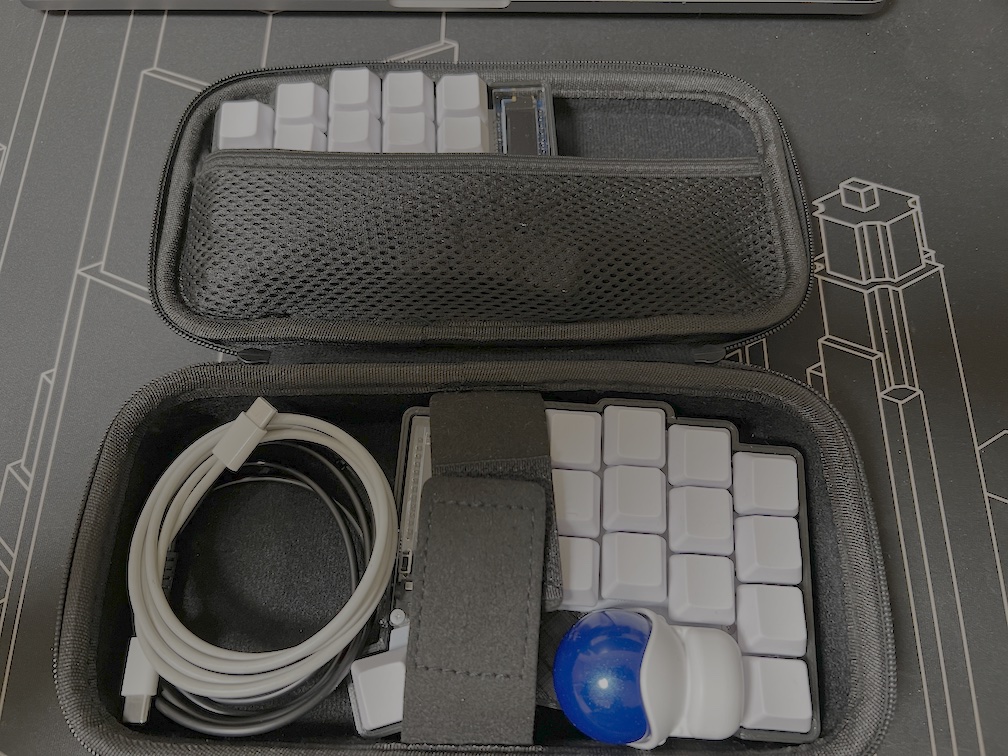
I might design a custom cover to make carrying it easier.
Next week I’m going to check out some of the custom keyboard shops in Akihabara, I plan to report back here about the experience. Definitely subscribe to the blog’s RSS feed if you want to learn about it.
Leave a Reply